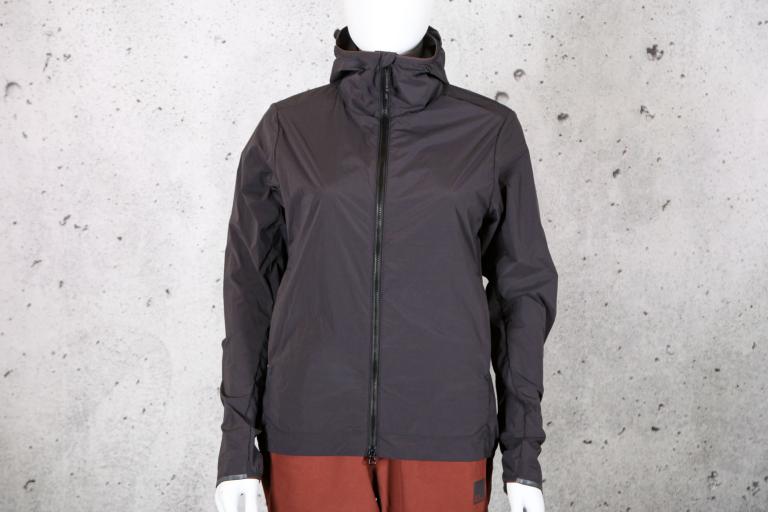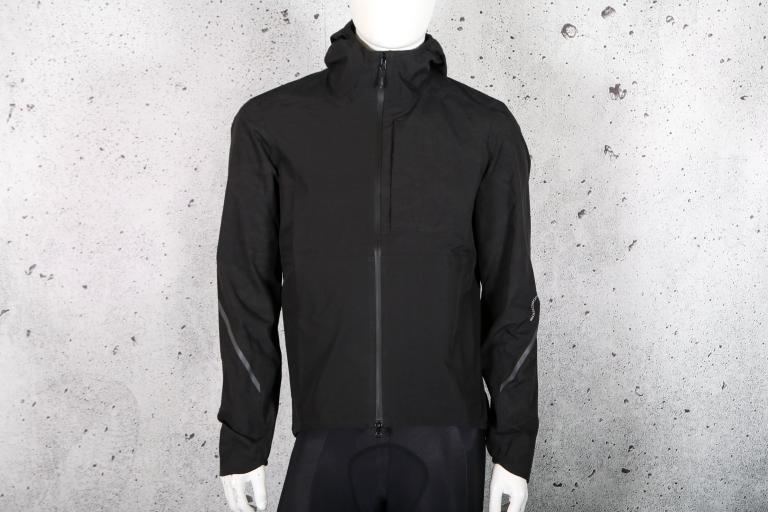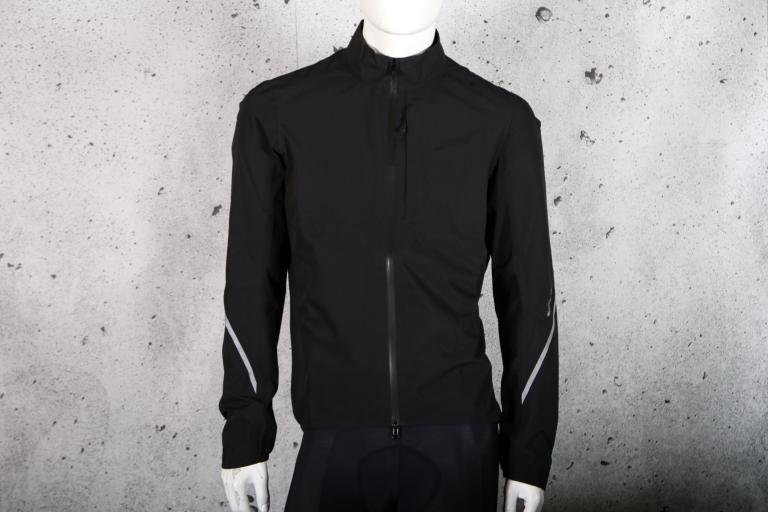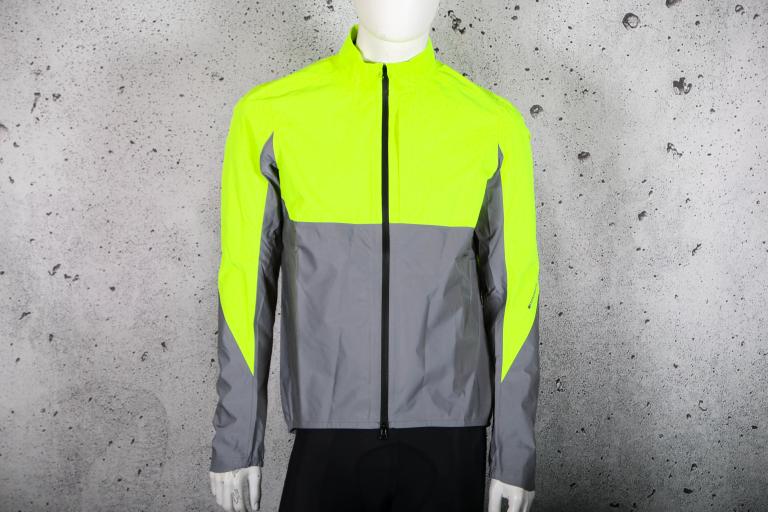- News
- Reviews
- Bikes
- Components
- Bar tape & grips
- Bottom brackets
- Brake & gear cables
- Brake & STI levers
- Brake pads & spares
- Brakes
- Cassettes & freewheels
- Chains
- Chainsets & chainrings
- Derailleurs - front
- Derailleurs - rear
- Forks
- Gear levers & shifters
- Groupsets
- Handlebars & extensions
- Headsets
- Hubs
- Inner tubes
- Pedals
- Quick releases & skewers
- Saddles
- Seatposts
- Stems
- Wheels
- Tyres
- Tubeless valves
- Accessories
- Accessories - misc
- Computer mounts
- Bags
- Bar ends
- Bike bags & cases
- Bottle cages
- Bottles
- Cameras
- Car racks
- Child seats
- Computers
- Glasses
- GPS units
- Helmets
- Lights - front
- Lights - rear
- Lights - sets
- Locks
- Mirrors
- Mudguards
- Racks
- Pumps & CO2 inflators
- Puncture kits
- Reflectives
- Smart watches
- Stands and racks
- Trailers
- Clothing
- Health, fitness and nutrition
- Tools and workshop
- Miscellaneous
- Buyers Guides
- Features
- Forum
- Recommends
- Podcast
review
 Santini Adapt Multi - Jacket
Santini Adapt Multi - Jacket£230.00
VERDICT:
Very lightweight jacket that can be worn in atrocious conditions, with the right baselayer
Highly breathable
Waterproof beyond expectations
Balanced temperature when working hard
Great cut
Great looks
You need to be working hard to stay warm
Weight:
340g
Contact:

This product has been selected to feature in road.cc recommends. That means it's not just scored well, but we think it stands out as special. Go to road.cc recommends
At road.cc every product is thoroughly tested for as long as it takes to get a proper insight into how well it works. Our reviewers are experienced cyclists that we trust to be objective. While we strive to ensure that opinions expressed are backed up by facts, reviews are by their nature an informed opinion, not a definitive verdict. We don't intentionally try to break anything (except locks) but we do try to look for weak points in any design. The overall score is not just an average of the other scores: it reflects both a product's function and value – with value determined by how a product compares with items of similar spec, quality, and price.
What the road.cc scores meanGood scores are more common than bad, because fortunately good products are more common than bad.
- Exceptional
- Excellent
- Very Good
- Good
- Quite good
- Average
- Not so good
- Poor
- Bad
- Appalling
The Santini Adapt Multi - Jacket is wonderfully warm yet also breathable, and very good at keeping out rain. If you want to go fast and/or far in cold or wet weather, this should be very high on your gear-to-buy list. Just choose your baselayer with care.
For more options, check out our guide to the best waterproof cycling jackets and the best winter cycling jackets.
> Buy now: Santini Adapt Multi - Jacket for £105.59 from Deporvillage
A decade ago Castelli reinvented wet-weather cycle clothing with the Gabba jacket, named after Cervelo pro racer Gabriel Rasch who helped pioneer the design thinking by apparently chopping the arms off a waterproof jacket. The idea behind the Gabba was to use an insulating, snug-fitting material – Gore Windstopper X-Lite Plus – that wasn't completely waterproof, and that didn't use fully-waterproof construction. The material needed to be light, stretchy and snug, suited to working hard in awful weather. Yes, the Gabba by definition is a short-sleeved jersey that gets paired with waterproof or resistant arm warmers, so a comparison with the Adapt Multi isn't strictly accurate, but bear with me, and imagine this is for rides where there's no way you're having bare arms.
Material science has come on in leaps and bounds since 2013, and the fabric chosen by Santini for the Adapt Multi – Polartec's Power Shield Pro – represents the cutting edge of highly waterproof, thermally insulating and breathable material.
As we covered in this roundup of Polartec's range, Power Shield Pro is a highly-breathable triple-layer fabric with a 5,000mm hydrostatic head waterproof rating. The close weave of the face fabric resists abrasion, making it suited to off-road shenanigans as well as longevity, and its soft feel means it's silent and crinkle-free, unlike hardshell waterproof fabrics. Rubbing the Adapt jacket between your fingers, the fact that it's waterproof is hard to believe, as it feels just like any thick winter jersey.
Inside the fabric is a fine grid-patterned backing. Not a 'fleece' as such, nor a terry treatment. It's a breathable insulation layer that's very thin, keeping the overall bulk of the material down. The fabric is so flexible and soft that you can see where the internal tape seals the stitched seams.
Design & details
So far, so cutting-edge tech, but the design of the Adapt is classic winter jacket – snug fit, high collar, generously-low hem at the back with gripper tape, and long sleeves to fully cover the wrists.
The three back pockets are deep enough to swallow the largest of phones or a decent tool roll, and on the left pocket is a zipped pocket for valuables, the waterproof zip giving confidence that sensitive items like battery-powered car keys will be safe from rain or mud.
The waterproof main zip is fully backed with a wide weather strip and has a generous pull tab for use with thick gloves. It's a two-way zip, so if you like to ventilate from the bottom up it's easy to get some airflow down low without turning your neck and chest area into a windsock.
The size large was a perfect fit for me, at 6ft tall with long arms – like, an extra 2in per appendage over the norm. I'm 82kg with broad shoulders, and the fit was tailor-bespoke-snug, the stretch fabric accommodating a modicum of middle-age spread.
Performance
So the fabric is world class, and it's designed and assembled with high-end Italian attention to detail. For £230 you'd expect high-class everything, but all the swish specs and design need to be matched by superb performance on the bike.
Santini rates the Adapt Multi jacket from 0 to 10°C. Its Vega Absolute jacket is rated from -8 to +5 degrees, so no, the Adapt isn't the deep-winter icebiking kit you're looking for; it sits squarely in the positive temperature range, aimed towards those planning to work hard, generating a fair amount of warmth.
I'm guessing Santini named the jacket 'Adapt' as that 0-10 degrees range is a difficult space to regulate comfort within when working hard wearing a single garment. Riding uphill at zero degrees in sunlight with no wind can feel surprisingly warm, while descending in 10-degree rain can be a truly miserable experience. Usually, these two use cases would require multiple garments – jersey, gilet, jacket – to manage comfortably. And it's across this challenging range that the Adapt Multi really shines.
My first ride in it was a frankly ludicrous setup that was asking for trouble: pairing with a long-discontinued Rapha merino fishnet-mesh baselayer and single-layer Stolen Goat gloves. No thick underlayer of insulation – in fact, the least-possible layer without eschewing a base entirely. Weather was a balmy 2 degrees, no wind.
Suffering from Raynaud's Syndrome, I fully expected to be turning around within 20 minutes as my arms failed to heat up and stay warm, sapping the heat from my blood which then renders fingers inoperable. Thirty minutes into the ride I was frankly flabbergasted that what was effectively a single layer could retain so much warmth, yet not feel like I was riding inside a plastic bag. Turning up a glen for 20 minutes of frequently out-of-the-saddle, rocky technical work showcased the Adapt's ability to regulate: I didn't need to unzip as the 10-15% pitches in lowest gear came and went along with the 95%-max-heart-rate alerts. Cresting onto a farm track plateau, I expected inevitable arm chill as the headwind hit moisture-laden fabric, but again, no – I stayed warm and happy as the track turned into a two-mile descent at the edge of reasonable (or reason).
So in the cold and dry the Adapt performs very well indeed. But this is a waterproof, sold on the basis that it will keep you comfortable in the worst of weather. Here you need to appreciate the new bargain to be struck.
My wettest ride in the Adapt was straight out into hard rain for two hours, around 5°C. Following the same route described above, everything was fine until I hit the top of the climb and had a good five minutes of descending and then flattish twists and turns before another climb and chance to warm up again. The Adapt is thin, and once wet through it does what every other close-fitting, wet-through outer layer does – it conducts heat. The wet outer fabric combined with a layer of sweat inside meant I lost heat faster than I'd like. While my hands stayed functional, it took a good 10 minutes of hammering along to get comfortable again. Had I needed to pace a slower rider, the result would have been misery.
On returning home, feeling the inside there was moisture evident, from sweat. There's no softshell fabric I know of that, once wetted out, can retain the same moisture transfer performance as when dry, so this was to be expected.
What I'm saying is that, for me, the Adapt is not the top to take on a cold and wet ride where you can't go hard the whole time. You could wear a thicker or even multiple baselayers, but then you're more likely to overheat unless it's properly miserable – which is maybe where I misjudged things in the above wet ride. Yes, you can ventilate using the zip, but then you're a windsock wearing a jacket designed to be aerodynamic. Choose your base right, and the Adapt is your friend.
Value
It's not that friendly to your bank account, but at £230 it does stack up well against other choices for waterproof cold-weather rides, such as the MAAP Training Winter Jacket, which at £270 and 526g is £40 more for a fluffier, heavier top with what sound like similar properties.
Or there's the Castelli Perfetto RoS 2 (marketed as the 'long sleeve Gabba'); it's £245, but without full waterproof capability.
Stu highly rated the £160 Stolen Goat Fluid Alpine Bodyline Jacket, noting that while the fabric is waterproof, the lack of seam sealing means the garment technically isn't – but that only matters in the very heaviest of rain for long periods.
Conclusion
If you're someone who rides warmer – meaning you don't have defective hand-arm circulation – then the Adapt may well be the perfect top for any cold ride, not just ones involving constant hard work. And for rides where the showers are passing or very light, the Adapt is a very, very good choice to consider.
Verdict
Very lightweight jacket that can be worn in atrocious conditions, with the right baselayer
road.cc test report
Make and model: Santini Adapt Multi - Jacket
Size tested: Large
Tell us what the jacket is for and who it's aimed at. What do the manufacturers say about it? How does that compare to your own feelings about it?
It's for people wanting to ride hard in bad or cold weather and stay balanced and comfy.
Santini says:
"If you are looking for an incredibly versatile winter product, look no further. Adapt Multi is designed to fit and feel like a jersey but it works like a jacket! Made of waterproof POLARTEC®'s Powershield Pro fabric (5000 mm water column) and fully thermosealed, it guarantees complete thermal balance in any climate conditions, and it is ideal for cold rides and wet weather. A unique guarment that will change the way you layer up in winter.
"The Santini Adapt Multi Jacket is designed to fit and feel like a jersey, but function as a highly protective winter jacket. Made from waterproof Polartec Powershield Pro fabric (resistant to a water column of 5000 mm) and fully heat-sealed, it ensures total thermal balance in all weather conditions, and is ideal for cold and wet weather outings. Its Slim cut is synonymous with great fit and adjustment to the body."
Tell us some more about the technical aspects of the jacket?
Santini lists these features:
Use: Road
Windproof, waterproof and breathable Polartec Power Shield Pro fabric, with high thermal insulation
Polartec fabric also provides high-performance thermal insulation
High collar for extra protection in sensitive areas
Full front zip with CamLock fastening
Triple back pocket with extra zipped pocket
Temperature range: 0 / +10°C
*Slim Fit: Fits to your body to minimise wind resistance.
Technology:
Polartec Power Shield Pro
Rugged 3-layer fabric protects against the elements, but without the stiffness of the hand and the loud noise of a hard shell. This allows Power Shield Pro to provide greater comfort while protecting against strong winds, rain, snow and even abrasive surfaces. And unlike other protective layers, Power Shield Pro's microporous membrane easily releases excess heat and moisture vapour for dry conditions, both inside and out.
Rate the jacket for quality of construction:
9/10
Very well assembled.
Rate the jacket for performance:
9/10
In near-freezing conditions with only a thin baselayer, it performed wonders in thermo-regulation.
Rate the jacket for durability:
8/10
Early days but still looks great, and the fabric is abrasion resistant.
Rate the jacket for waterproofing based on the manufacturer's rating:
9/10
The Polartec fabric has a hydrostatic head waterproof rating of 5,000mm, but in my experience it performed beyond expectations.
Rate the jacket for breathability based on the manufacturer's rating:
8/10
Very breathable but not perfect, especially once wet.
Rate the jacket for fit:
10/10
The longer arms made for a perfect fit on me.
Rate the jacket for sizing:
8/10
Rate the jacket for weight:
8/10
For a full waterproof with some insulation, it's very light.
Rate the jacket for comfort:
10/10
Feels like a second skin. Very snug.
Rate the jacket for value:
6/10
How easy is the jacket to care for? How did it respond to being washed?
Still looks like new.
Tell us how the jacket performed overall when used for its designed purpose
Really well, paired with the right baselayer.
Tell us what you particularly liked about the jacket
The ability to control temperature.
Tell us what you particularly disliked about the jacket
Nothing.
How does the price compare to that of similar products in the market including ones recently tested on road.cc?
It's not a cheap option, but it is competitive to other brands, considering the performance and features.
Did you enjoy using the jacket? Yes
Would you consider buying the jacket? Yes
Would you recommend the jacket to a friend? Yes
Use this box to explain your overall score
It's excellent; at £230 it's not cheap, but it's still better value than some.
About the tester
Age: 47
I usually ride: Sonder Camino Gravelaxe My best bike is: Nah bro that's it
I've been riding for: Over 20 years I ride: A few times a week I would class myself as: Expert
I regularly do the following types of riding: cyclo cross, general fitness riding, mtb, G-R-A-V-E-L
Living in the Highlands, Mike is constantly finding innovative and usually cold/wet ways to accelerate the degradation of cycling kit. At his happiest in a warm workshop holding an anodised tool of high repute, Mike's been taking bikes apart and (mostly) putting them back together for forty years. With a day job in global IT (he's not completely sure what that means either) and having run a boutique cycle service business on the side for a decade, bikes are his escape into the practical and life-changing for his customers.


























- looks like someone has fallen for the steel is real markerting BS. I only care how a bike rides, not what it is made of. I had a lovely steel...
That argument is ignorance of the widespread height and width restrictions to be found on the many minor roads that were originally created for...
cyclists should be made to have number plates - Interesting police video here of the range of illegal number plates - we'd got, as the caption says...
Some kind of lens cleaner apparently
The trailer seems to connect to both ends of the rear axle. Can it do tight corners without dragging the tyre sideways?
Motorists have always been unkind to cyclists, but distracted driving is adding to the problem....
Have you owned Bont shoes? In my experience even the widest Lake shoes have had a bizarre form of narrowing way too much in the toe area. But the...
Not sure if this is possible, but this news letter goes out all over the world, and some places like Decathlon does not send stuff to America, in...
I'm confused as to why you'd need bib shorts indoors.
I'm sure you were being sarcastic... however ... Lewis Hamilton lives in Monaco. Yet another car driver that doesn't pay any tax